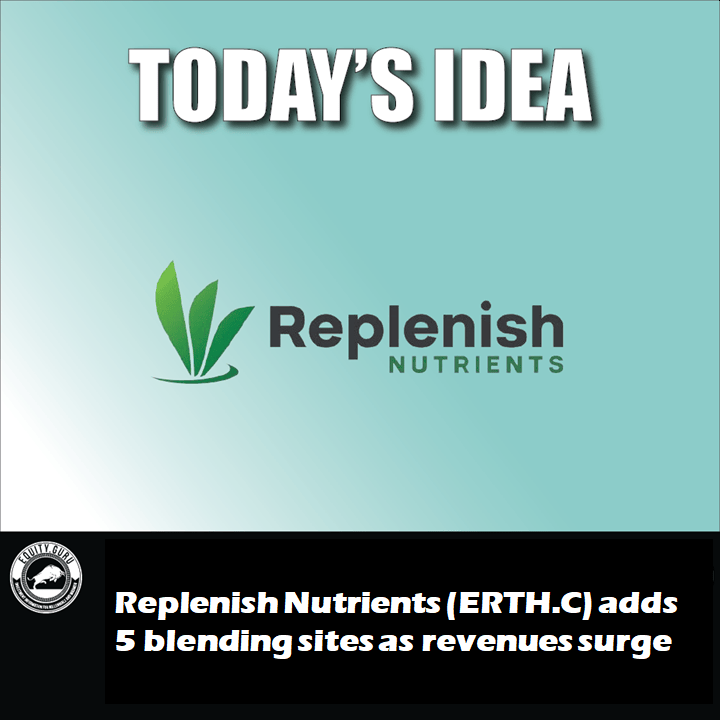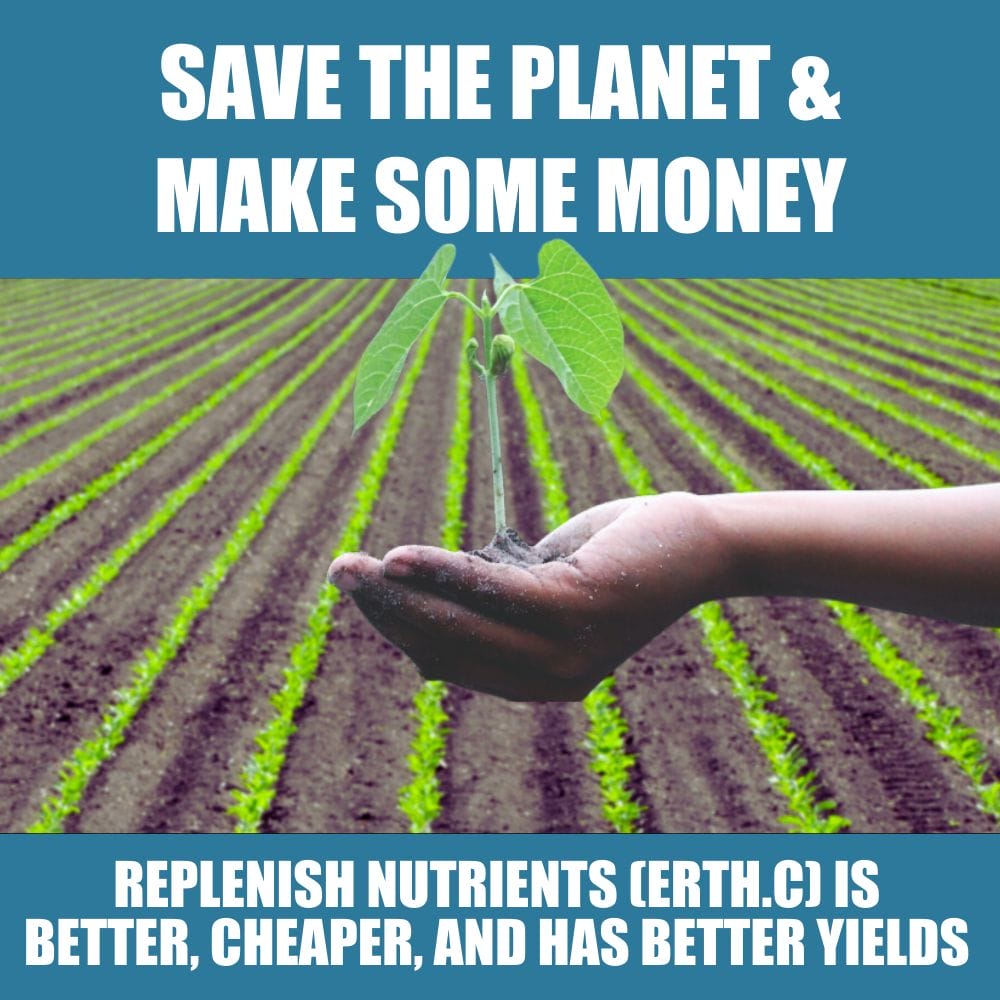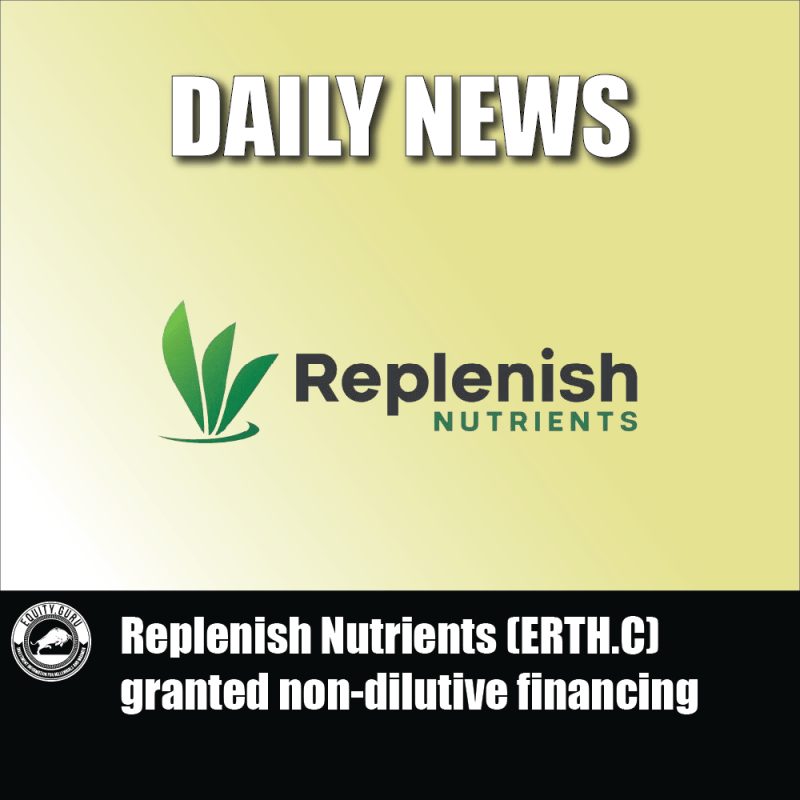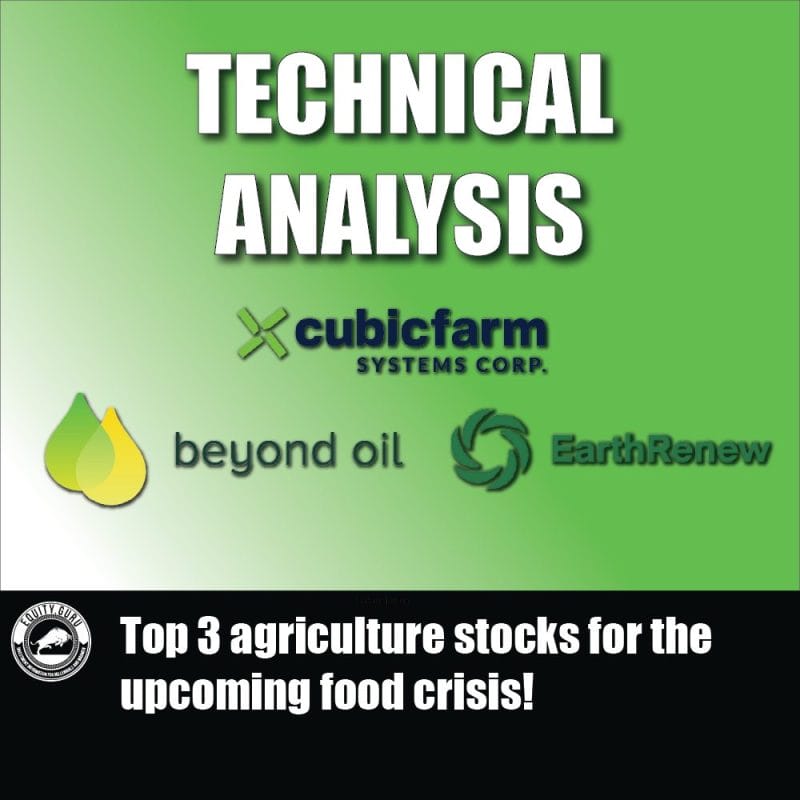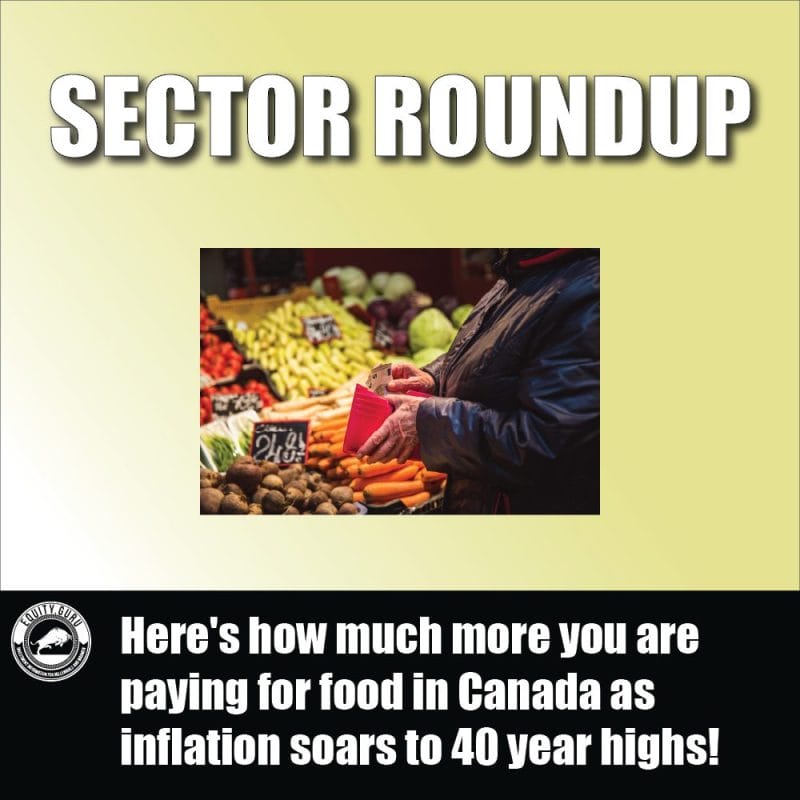On August 09, 2022 Earthrenew (ERTH.C) – soon to be renamed ‘Replenish Nutrients’ – provided an update for the 2022 fall season, including “growth in its blended product network and our granulated facility expansion plans”.
Replenish Nutrients has carved out a lucrative business delivering a sustainable alternative to synthetic fertilizers, part of the global food market value chain which generated $8.27 trillion U.S. dollars revenue last year.
Replenish Nutrients delivers regenerative fertilizer solutions to support a farm system that puts healthy soils and grower profitability back on the table.
Key Fall 2022 Highlights:
1. Expansion of the number of blending sites from 2 to 7
2. Situating the blended sites closer to its customers
3. Anticipated higher gross margins
4. Reduction of transportation costs
5. Reduction of handling costs
6. Quicker delivery times for distributors
“The increased number of blending sites will also increase the volume of fertilizer the company can deliver to the market,” states ERTH, “This will allow the company to fulfill the higher-than-expected demand for fertilizers this season as it advances toward the target of 200 per cent year-over-year sales growth.
“Where we once housed most of our inventory at one central location, now we are increasing the number of hubs,” stated Wade Egeland, Replenish Nutrients’ Manager of Operations & Logistics, “We believe this will improve our efficiency in delivering to our partners and customers while enabling us to move a larger volume of product.”
Replenish Nutrients has heavily invested in research to develop fertilizers that heal the soil while producing equal or better results — feeding the soil microbes a balanced diet of nutrient crops and making regenerative fertilizers better than their synthetic counterparts.
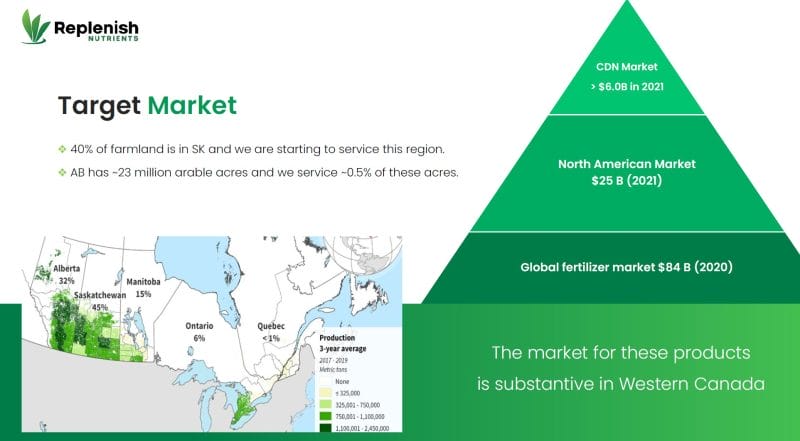
Key Regenerative Agriculture Principles:
Conservation tillage: By adopting low- or no-till practices, farmers minimize physical disturbance of the soil.
Diversity: Plant diversity helps create nutrient-dense soils that lead to more productive yields.
Rotation and cover crops: By rotating crops, farms can infuse soils with more diverse organic matter, avoiding disease and pests.
Mess with it less: Restrain and caution with chemical or biological additives which can disrupt the natural relationship between microorganisms and plant roots.
Replenish Nutrients continues to advance operations at the Beiseker facility with key orders in place for the fall season.
In September 2022, ERTH is planning to initiate construction at DeBolt. Operational improvements at the Beiseker demonstration site will inform facility design and operations, focusing on value-add coatings that will improve product handling and customer value.
While the Company has two significant development projects in the near term (the Northern Alberta site in DeBolt, AB, and the Saskatchewan site near Bethune, SK), Replenish Nutrients looks to expand its business outside Western Canada.
Replenish has secured a grant from the Alberta Export Expansion Program, allowing it to advance business development efforts by meeting with prospective site, distribution, and sales partners.
This includes events such as the recent Healthy Soil Summit in Sacramento, California and the upcoming Fertilizer AgriTech Forum in Dallas, Texas.
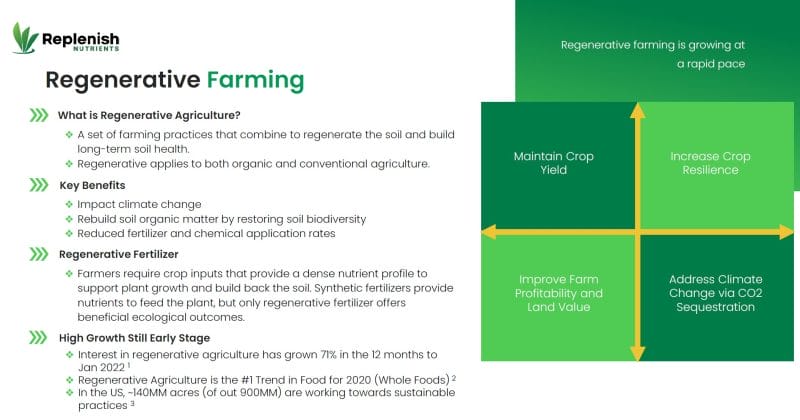
“Food costs rose 10.4% in June from a year ago, reported Equity Guru’s Vishal Toora last month, “The largest increase since 1981. Food at home rose 12.2% the quickest pace since April 1979. Groceries are definitely getting more expensive”.
“According to the latest data from Datasembly’s Grocery Price Index, baking goods jumped 7.6%, snacks such as cookies and chips increased 7.5%, and dairy and eggs were up 6.9% across the US,” added Toora.
“New York City saw an 11.3% rise in produce, 11.5% in snacks, cookies and chips, and 9.5% in beverages. San Francisco experienced an 8.7% increase in dairy and egg prices”.
On June 10, 2022 Keith Driver, CEO & Director of EarthRenew spoke with Maddy to discuss regenerative farming and EarthRenew’s business objectives in a macro-environment of rising food prices.
“It’s a record commodity price time,” explained Driver, “So farmers have this pot of gold at the end, if they can pull off a really good crop. There are challenges with the war in Ukraine and lack of access to urea and potash”.
“It’s forcing farmers to try new ingredients, which is good for us. You’ve got all these macro forces indicating it will be a great year, but the inputs are expensive, and hard to come by.
“For a company like us who sells regenerative fertilizers, it’s a perfect moment where we’ve got farmers interested in trying our products, and the pricing is going to support that trial.”
“Regenerative farming feeds the soil to feed the plant. We make sure that microbes are there, we make sure the nutrients are available in the soil. When they make fertilizers chemically, they create a chemical salt. And that salt is actually killing the soil. The more fertilizer you put down, the more yield you get. But the worse the soil health is. So next year, you have to put more salt on and more fertilizer on and it compounds.” – End of Keith Driver quote.
“The Netherlands unveiled plans to reduce nitrogen oxide and ammonia emissions this month, requiring farmers to use less fertilizer and reduce their livestock numbers,” reported ERTH, “Cuts up to 70% in some areas are expected, likely resulting in the shuttering of some farm operations”.

Two months ago, ERTH raised $10.4 million by issuing 41 million new shares at .25.
“The push for increased regulation is on the horizon for Canada, too. Agriculture and Agri-Food Canada published a discussion paper this spring on its plan to reduce N2O emissions from nitrogen fertilizer use at the farm level by 30 per cent”.
Depending on how emissions are calculated, reducing fertilizer use may not be enough to meet the target, causing a decrease in yield production to no one’s benefit.
However, a replacement option would provide crops with needed nutrients while protecting the soil: regenerative fertilizers.

